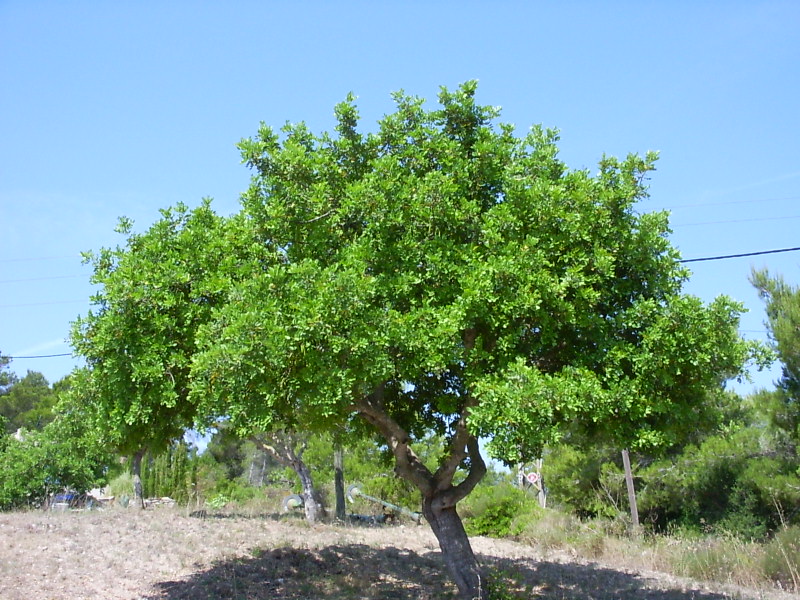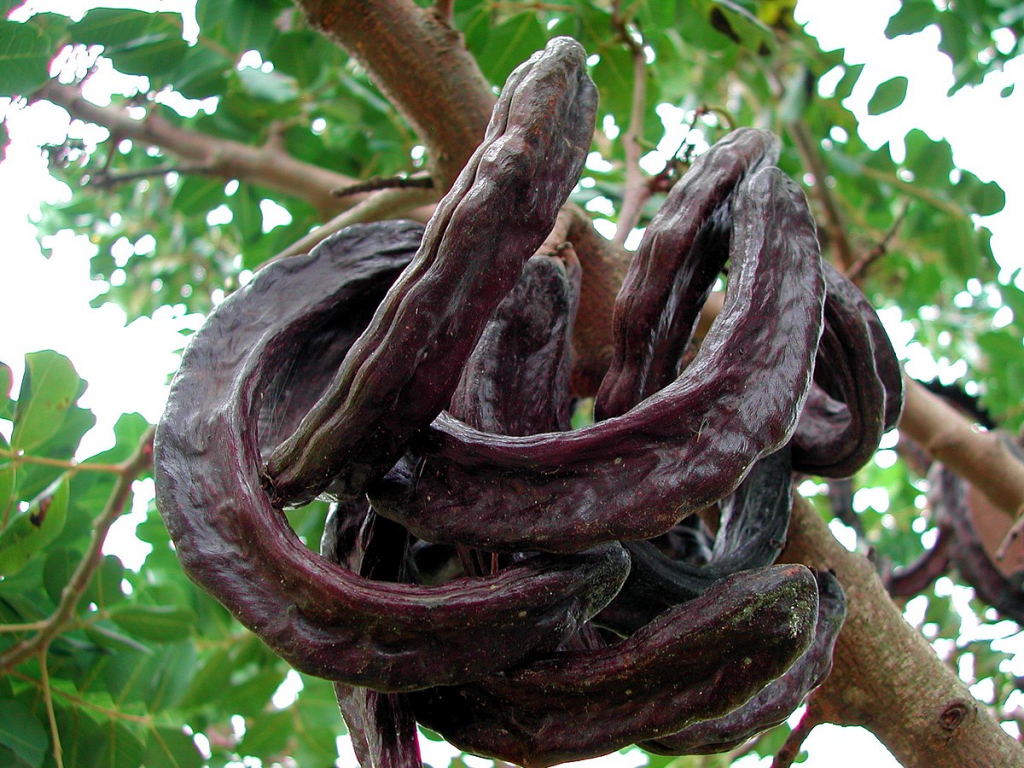
Carob tree, also called St. John’s-bread and locust bean, is an evergreen tree and member of the pea family (Fabaceae) that also includes beans, lupines, and mimosa . It is native to Southern Europe, Northern Africa, the Levant, Middle East and Macaronesia where it grows in rocky places near the sea shore. In biblical times, the Bible suggests, the pods were fed to swine. The ancient Roman naturalist, Pliny the Elder (died 79 AD), notes that the fruit (pods) are “of remarkable sweetness”, are eaten, and also used to make wine. The ancient Greek physician and pharmacologist, Dioscorides, who travelled with the emperor Nero’s army, valued carob for its use in relieving stomach pain and settling digestion. Carbonized carob plant material was found in the ruins of the Pompeii area. Photo Credit Wikipedia

The tree is low-branching, dense, and compact. It has contorted branches, rough dark-brown bark and a rounded crown. The pinnately compound leaves are six to nine inches long and have six to ten oval leaflets one to three inches long. They are leathery, glossy, and dark green above with paler undersides. Red buds open to small yellowish male and female flowers carried in lateral racemes on separate trees in spring. Female flowers produce brown, glossy, flat, narrow, leathery pods four to twelve inches long and containing up to 15 seeds. Both male and female flowers must be present for pod production. The pods are protein-rich , contain up to 40 percent sugar and are produced in abundance every second year from August to October. Today, the tree is cultivated as an ornamental as well as for its pods that can be ground and used in place of cocoa powder. Photo Credit Wikipedia
Size: 20-45’ H x 20-55’ W
Light: Sun
Soil: Average, light, moderately moist, well-drained but tolerates less including alkali soil.
Hardiness: Zones 9-11